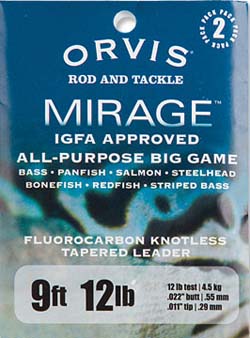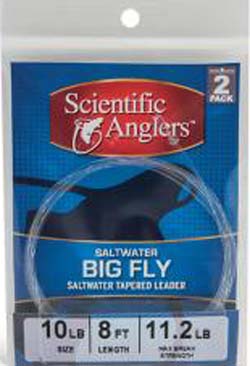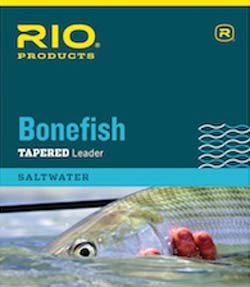Think About It:
[dropcap]O[/dropcap]ver the course of many years, a fly angler learns just how important leader construction is. While discussing the subject puts some to sleep, it’s something a professional guide, tournament angler or serious fly angler gives great attention to – along with the care to tie terminal tackle knots, properly. If your leader set-up is wrong, your casting could be severely compromised.
About Ones Butt:
Many anglers put on a butt section using a loop to loop from fly line and a “big” loop to loop to connect and complete the leader – treating the butt as if it were a separate piece and that any further leader attachments, midsection and tippet, would be in complete leader ”balance.” Far from the truth. As a matter of fact the latter is set up to destroy a decent cast by creating “hinges” that will cause the line to collapse, spoiling the presentation.
The butt is part of the leader and should be tied integrally – part of the whole:
The butt should be relatively equivalent in thickness to the fly line itself. Additionally, the butt should always make-up a lttle more than half the length of the entire leader. For example, if the leader is going to be 12-feet, then the butt section should be around 7-feet with relatively equal midsection and tippet. Many refer to it as 60, 20, 20.
Capt. Mike Conner served as our editor for several months a few years ago and had this to say about leaders: “Though not all brands of monofilament, or fluorocarbon, have the exact same diameters for their test ratings, they are pretty close. For example, most 50-pound-test monos, ideal for butt sections of 9-weight and 10-weight fly lines, have a diameter of .028 or .029 inches.”
Here’s Mike’s easy to remember chart on butt pound test relationships with rod weight:
- 30-pound-test mono for a butt for a 7-weight rod,
- 40-pound piece for an 8-
- 50-pound for a 9- and 10-
- 60-pound butt section for 11-weight and heavier fly lines.
I keep that chart on my tying desk, make my leaders and keep them in leader wallets along with a leader spools of the same brand mono or fluorocarbon in ZipLok® bag. Everything is marked and dated. If it’s 1 year old and has not been used – it’s in the recycle bin. Old knots are bad knots.
Mix and Match?
Years ago, at one of Steve Kantner Presents seminars, Lefty Kreh was asked about mixing brands in leader constuction, he cringed and proceeded to explain. Each brand (monofilament or fluorocarbon) has certain properties (e. g. breaking strain, knot strength, softness, surface hardness, surface chemistrty, etc.). One brand could have a real slippery outer coating, another a tacky surface – add slight diameter diffferences and you’ve made knot seatting a tough job. Don’t integrate different leader brands when building a leader. NOTE: Super hard leader materials, like Mason, make unfurling – turning over line difficult. However, Mason makes the best weedguards.
You’ve Come a Long Way Baby:
Not long ago, knotless leaders (produced by extruding – tapering the nylon or fluorocarbon fibers), had little to write home about. They were lacking in both length available and diameter-taper that helped turn over the line (butt too thin). Scientific Anglers’ Mastery Series, ORVIS and RIO tappered leaders are now nice alternatives for five-thumbed knot tyers. And there’s no weed pick up at knot connections.
Today, these quality knotless leaders come in both 9- and 12-foot lengths with tippet strengths ranging from 8- to 16-pounds. There is a knotless leader available for all flats species, including stripers, albies and blues – just add bite guards/shock tippet and you’re locked and loaded.
Knotless leaders are available for all saltwater flats game fish found in the southeastern seaboard, Gulf Coast, Bahamas, Mexico, Belize, Panama, and west coast of the U. S. and Baja. Just add bite guards or shock tippets and you’re good to go.
Tip:
Assuming you have a loop in your fly line and you have a knotless leader, tie on a short butt (using Mike’s formula) of about 5- to 7-inches long (+/-) and make a tight Perfection loop. This way you can make knotless leader change-outs in a few seconds if conditions change or a new game fish species arrives on the scene.
RIO Products has taken the lead in the manufacture of knotless leaders and here’s some examples that testify to that
- RIO’s Bonefish Leaders come 10-feet and 12-feet long, knotless, clear with butts @ .027-inches to .029-inches – 8.8- 10-, and 13.2-pound. Ten foot leaders also come in a 3-pack.
- Even professional guides use RIO’s hand tied Tarpon Leaders, and here’s why. They’re made of ultra hard nylon, tapering from a double strand of 22-pound class tippet butt material and finishing with a 24-inch section of shock tippet. A Bimini Twist Knot in the end of the 20-pound class tippet ensures the best protection possible, and a Perfection Loop in the twisted end makes it easy to attach a fly or butt section. Available in 3-packs only.
- RIO’s 10-foot long leaders are universal in usage. They’re tapered with a Fluorocarbon Shock Tippet. The butt is .029-inches, ultra stiff with a 15-pound test tippet for chucking big flies at cobia, permit, reds, snook and seatrout.
- RIO’s Toothy Critters Leaders come with Vectran Wire that you can tie a knot with and a nylon-coated stainless steel wire with a stainless snap. All leaders are 7.5-feet long, .027-inch butts with ultra stiff 15-pound test tippet.
- RIO’s general, saltwater all-purpose 10-foot long leader. It’s clear and has a thick butt. Available 8-pound test, 10-pound test, 12-pound test, 16-pound test, and 20-pound test.
[information]
Scientific Anglers website . . .
[/information]










